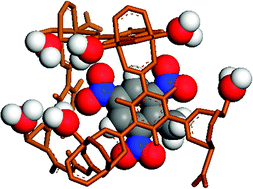Grand canonical Monte Carlo simulations were performed to identify trends in low-pressure adsorption of a broad range of organic molecules by a set of metal–organic frameworks (MOFs). While previous simulation studies focused on the adsorption of small molecules such as carbon dioxide and methane, we consider more complicated organic molecules relevant to chemical sensing and detection: small aromatics (o-, m-, and p-xylene), polycyclic aromatic hydrocarbons (naphthalene, anthracene, phenanthrene), explosives (TNT and RDX), and chemical warfare agents (GA and VM). The framework materials include several Zn-IRMOFs (IRMOFs 1–3, 7, 8), a Cr-MOF (CrMIL-53lp), and a Cu-MOF (HKUST-1). A wide range of loading pressures is examined, extending from 100 ppm to 10 ppb in air, thus spanning the entire range of conditions relevant to chemical sensing for security, environmental, and industrial process monitoring. Our results are validated by comparing calculated adsorption energies with experimental values, where available. Many of the larger organics are significantly adsorbed by the target MOFs at low pressure, which is consistent with the high isosteric heats of adsorption (12 kcal mol−1–49 kcal mol−1) computed for these analytes. These adsorption energies are significantly large that interference from atmospheric components should not interfere with chemical detection at low pressures. We show that pi–pi stacking interactions are an important contributor to these high heats of adsorption. CrMIL-53lp shows the highest adsorption energy for all analytes, suggesting that this material may be suitable for detection of low-level organics. At higher loading pressures, the Zn-MOFs show a much higher volumetric uptake than either CrMIL-53lp or HKUST-1 for all types of analyte considered here. Within the Zn-IRMOF series, analyte loading is proportional to accessible free volume, and loading decreases with increasing analyte size due to molecular packing effects. Overall, the results demonstrate that atomistic simulation can be used as an efficient first step in the screening of MOFs for detection of large molecules. For example, at the 10 ppb level, all of the Zn-IRMOFs are able to distinguish between TNT and the structurally similar xylenes.


 Please wait while we load your content...
Please wait while we load your content...